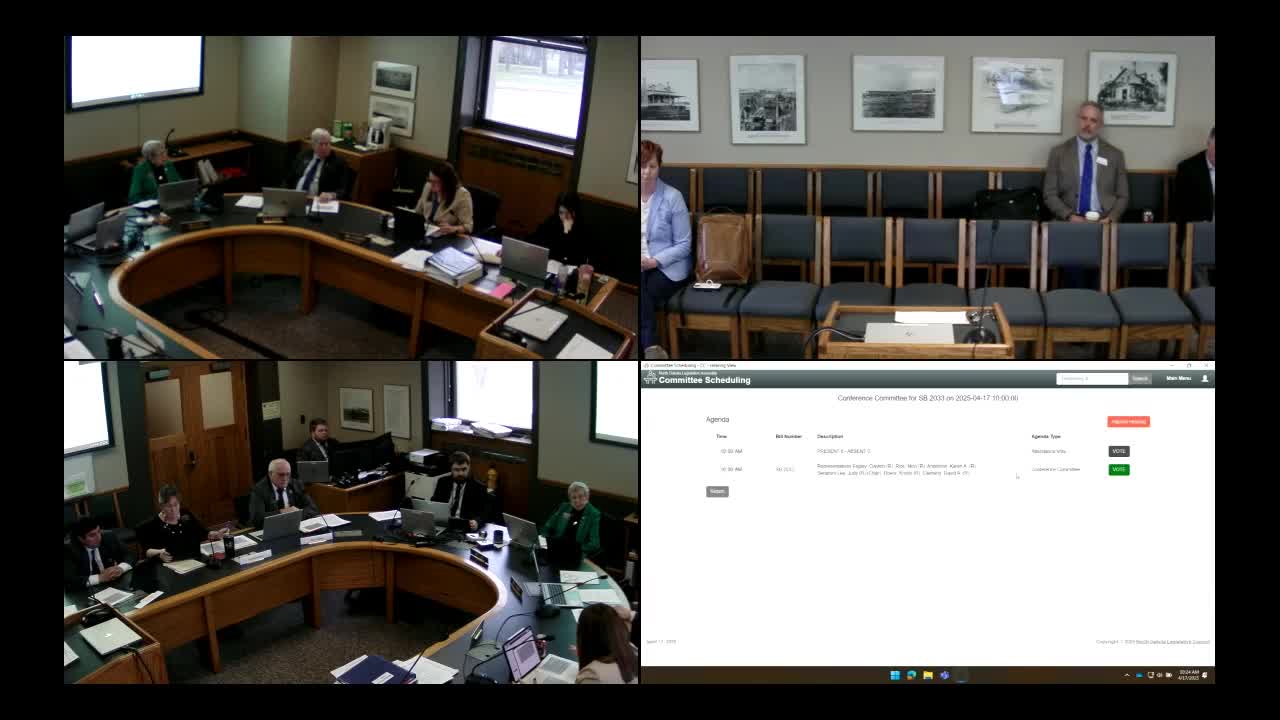Health Department discusses support for struggling rural ambulance services
April 17, 2025 | Senate, Legislative, North Dakota
This article was created by AI summarizing key points discussed. AI makes mistakes, so for full details and context, please refer to the video of the full meeting. Please report any errors so we can fix them. Report an error »

During a recent meeting of the North Dakota Legislature's SB 2033 Conference Committee, significant discussions emerged regarding the challenges faced by rural ambulance services. The committee members expressed concerns about the logistics of maintaining adequate ambulance coverage, particularly in light of staffing shortages and the need for timely responses to emergencies.
One key issue raised was the requirement for ambulance services to provide 30 days' notice before making operational changes. Committee members questioned the practicality of this rule, especially if an ambulance service is unable to respond due to staffing issues. They emphasized the importance of having a structured support system in place to assist struggling services rather than leaving them without resources during critical times.
The conversation highlighted the need for collaboration among various stakeholders, including hospitals and neighboring ambulance services. Committee members advocated for a proactive approach to recruitment and training of emergency medical technicians (EMTs) to ensure that rural communities have the necessary personnel to respond to emergencies effectively.
Additionally, the committee discussed the role of the health department in providing resources and support to ambulance services. They underscored that the goal is not to take over these services but to offer assistance and guidance to help them thrive.
As the meeting concluded, members expressed a commitment to revisiting these discussions and exploring potential solutions to strengthen rural ambulance services. The committee aims to ensure that these vital services remain operational and capable of meeting the needs of their communities, reinforcing the importance of collaboration and support in addressing public health challenges.
One key issue raised was the requirement for ambulance services to provide 30 days' notice before making operational changes. Committee members questioned the practicality of this rule, especially if an ambulance service is unable to respond due to staffing issues. They emphasized the importance of having a structured support system in place to assist struggling services rather than leaving them without resources during critical times.
The conversation highlighted the need for collaboration among various stakeholders, including hospitals and neighboring ambulance services. Committee members advocated for a proactive approach to recruitment and training of emergency medical technicians (EMTs) to ensure that rural communities have the necessary personnel to respond to emergencies effectively.
Additionally, the committee discussed the role of the health department in providing resources and support to ambulance services. They underscored that the goal is not to take over these services but to offer assistance and guidance to help them thrive.
As the meeting concluded, members expressed a commitment to revisiting these discussions and exploring potential solutions to strengthen rural ambulance services. The committee aims to ensure that these vital services remain operational and capable of meeting the needs of their communities, reinforcing the importance of collaboration and support in addressing public health challenges.
View full meeting
This article is based on a recent meeting—watch the full video and explore the complete transcript for deeper insights into the discussion.
View full meeting
